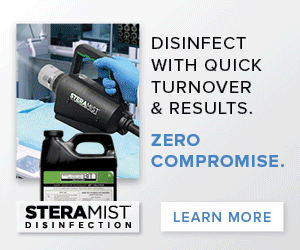A powerhouse group was created with the goal of getting ASTM to adopt standards for SIJ fusion devices.
Accurate, repeatable, and reproducible—that’s the mantra we’ve built our testing business on. It’s the rallying cry of our consulting crew because they know that’s what regulatory bodies demand of test results to prove products are safe enough to go into the human body.
We rely on standards from the American Society for Testing and Materials (ASTM) to guide us as we push products to their breaking point. My company follows ASTM test methods and standards. For years, I’ve been a voting member for Empirical. In 2021, I was voted in as a member-at-large for medical devices. Since 1898, ASTM been one of the most important resources for engineers, scientists, manufacturers, and other professionals.
ASTM’s list of standards, specifications, and guidelines are exhaustive, complex, and cover hundreds of industries and specializations, though it’s not all-encompassing. When testing a device not covered by ASTM or another published test method, we do our best to adapt to something comparable. After repeatedly adapting or reinventing standards for other devices to test a variety of sacroiliac joint (SIJ) fusion devices, we wondered about a better way.
“What I see from [SIJ fusion device] to device is that the testing was quite inconsistent across each of these products, even if they were the same type of product. I’ve served on both the testing side and the consulting side; when I look at historical projects in either group, I see that inconsistency,” said Nathan Wright, Engineering and Regulatory specialist at Empirical Technologies. “I know our clients rely on us for expertise. We didn’t have a great single benchmark for testing these devices, just our experience and history of testing them in a variety of ways without rationale for which was the right or best way. A lot of the (SI joint fusion device) manufacturers out there have run into the same problem and have had to rely on one or more of the adaptions from other standards.”
Coming up with those adaptations and deviations to standards to accommodate devices outside their scope is complex and time-consuming—and maddening for those of us who are devotees of accurate, repeatable, and reproducible.
“We’ve seen a resurgence of new technology in this space,” Wright said. “There’s a lot of new product development for SIJ fusion devices. So we wanted to ensure we’re testing in the best and most consistent way we can.”
Wright agreed to take the lead on a team to craft and publish a test method specifically for SIJ fusion devices in late 2019 with the goal of getting ASTM to adopt standards for this type of device. Wright reached out to the spinal subcommittee of ASTM to get the ball rolling and invite its members to take part in the project. He contacted FDA reviewers, manufacturers, product developers, and other testing lab professionals to join monthly meetings to get input from the industry on how to develop testing standards.
Derek Lindsey, director of Research Engineering at SI-BONE, was part of that group working to build these test methods that were fully developed in a preliminary form by the end of 2020 and finally accepted June 28.
“You can definitely call it a collaborative work group,” Lindsey said. “Having standardized ways of testing is easier all around. It’s easier for the people trying to create products, it’s easier for people trying to get it through the regulatory pathway.”
Even a pandemic didn’t slow down this group of industry experts determined to set a new standard.
“I was confident it would happen,” Wright said. “I had to be patient and overcome the hurdles that came along the way. We just needed to take initiative to push hard. Our clients needed it, the FDA needed it, so we were going to collaborate and figure out what it takes to get it done.”
It was a layered effort that moved surprisingly quickly, given the process’ depth. The group Wright assembled balloted the method to the spine subcommittee. Once it passed that subcommittee, it went to the main committee for a vote. After the main committee voted to pass the method, it went through an internal work process to become an official ASTM document. Any negative votes along the way must be resolved to move the process forward., Once it goes back to vote—even if all the negative votes are resolved—the process restarts if a committee member votes “no.”
“The challenge I was foreseeing is that ASTM can take a long time to get standards through,” Lindsey said. “In this case, I think Nathan did a really good job. From when I first heard of it to when it was published, it was less than two years. I’ve heard it’s much longer than that in general for a new standard.”
The first attempt with the subcommittee on that journey was last March. They didn’t garner enough support on the subcommittee ballot to accept that first version of the proposed new standard. With detailed feedback from the spinal subcommittee, they went back to work. They resubmitted in August and the subcommittee required testing data confirming the proposed tests worked and were repeatable.
“[Empirical] just put it on ourselves to make all this happen in-house,” Wright said. “We covered the costs—material, time, equipment—and performed all the repeatability testing. Once we had data, we submitted for ballot a third time in March 2022.”
Cliché warning: the third time was the charm.
“Each time we took it to vote, I just knew it was a little closer, and it was going to happen,” Wright said.
With input from ASTM subcommittee members, FDA reviewers, manufacturers, product developers, and testing lab representatives, the final product ASTM F3574-22 Standard Test Methods for Sacroiliac Joint Fusion Devices is one that factors in multiple interests in the common goal of improving the safety of devices.
“The standard covers multiple approaches [for SIJ fusion devices],” Lindsey said. “I can see from at least the [Empirical Testing Corp.] pathway it helps standardize how you deal with various customers.”
The group’s tenacity, expertise, and shared purpose fueled the relatively quick approval of the publication of new protocols that will benefit the medical device industry and the people we serve.
“It definitely is easier if I can point to a standard, it definitely makes things easier for us to deal with [obtaining approval/clearance],” Lindsey said. “Whether it’s a test house or an internal test resource, it reduces the number of questions and concerns for future regulatory submissions to follow a defined test standard.”












